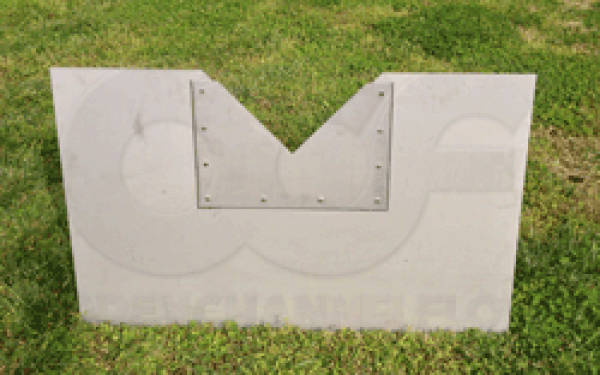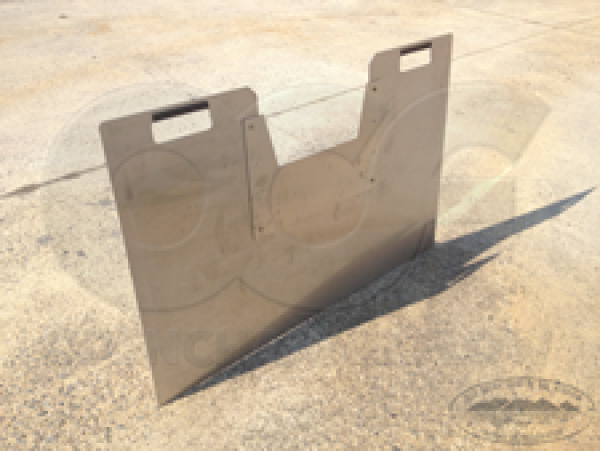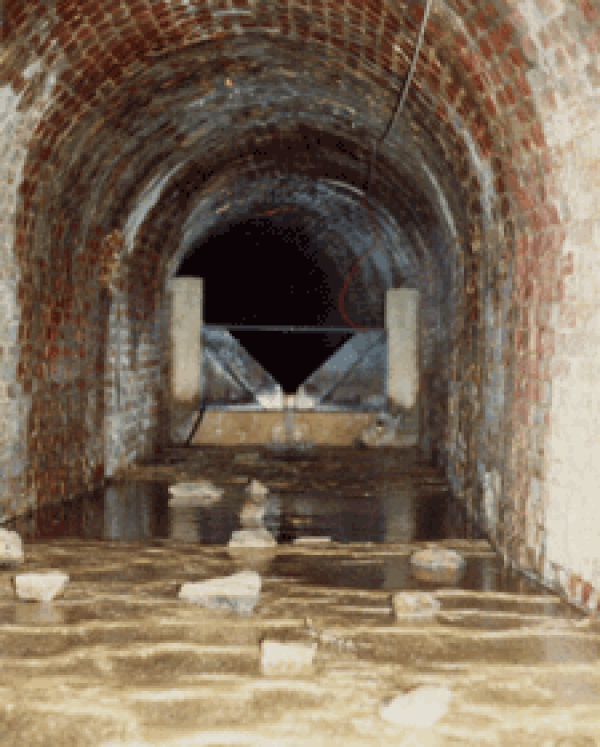This website uses a variety of cookies, which you consent to if you continue to use this site. You can read our Privacy Policy for
details about how these cookies are used, and to grant or withdraw your consent for certain types of cookies.
Wooden Weirs in Stream Gauging
Let’s face it – we are all under pressure to save money and accomplish our jobs at a minimum of cost.
In stream gauging, it is tempting to use wood (usually plywood) to make a weir from. Why not? The shape of a weir is deceptively simple - just a notch in an otherwise flat plate.
Unfortunately the reality is somewhat different...
Weir Crest Thickness
Numerous studies have shown that the accuracy of a weir is directly tied to the thickness of the weir crest (that area of the weir notch where water flows). The thickness of a weir crest should be no more than 1/8-inch [0.3175 cm] thick. For weirs made of thicker materials, the downstream portion of the crest should be beveled at a 45 to 60 angle so that the crest maintains this dimension.
Problems with Wooden Weirs
Unfortunately, plywood has a tendency to splinter at so fine a thickness. Rounding the edge of the weir crest to minimize splintering is not an option as even minimal rounding has been shown to produce errors in measurement of up to +/- 2%.
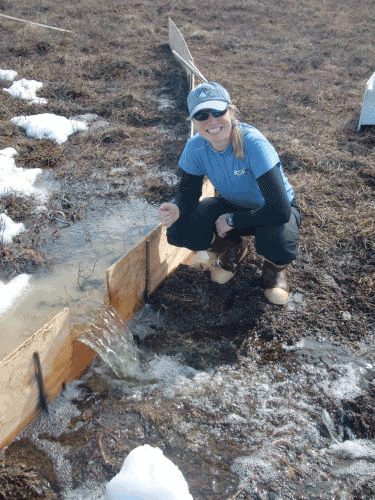
Also the surface of a sheet of plywood, compared to a sheet of stainless steel, aluminum, or fiberglass (the three most common materials of construction) is quite rough – another no-no when it comes to weirs.
Given how sensitive weir crests are to the effects of nicks, dents, and rounding; it is extremely difficult to maintain a wooden weir crest so that it provides. Even in weirs fabricated from soft metals, there is a constant need to inspect and correct damage to the weir crest.
Other Weir Materials
For this reason, stainless steel portable weir carriers with interchangeable weir plates have been developed. Portable weir carriers allows plates to be removed and replaced as the needs of the site require or as maintenance dictates. With material thicknesses of no more than 1/8-inch [0.3175 cm], portable weir carrier / plate systems avoid the need for weir crest beveling.

Uses for Wood
While wood doesn't make for a great weir, it does have applications in stream gauging.
Temporary Weir Installations
For a temporary installation, a wooden weir can be used - with the addition of a metal plate attached to the upstream edge of the weir notch to serve as the weir crest. In placing the metal weir plate the crest must be placed high enough above the notch in the wood so that flow can spring freely off the metal crest unimpeded (not impacting the wood after it passes over the weir crest).
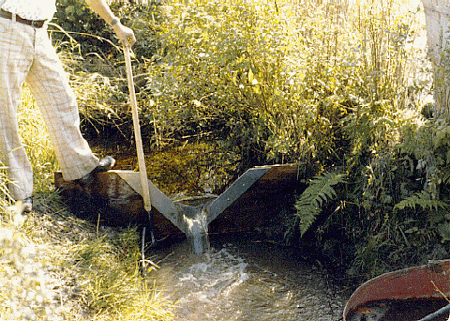
Also, remember that for a weir to operate correctly, a minimum difference between the weir crest and the downstream water surface of 2-inches [5.08 cm] or more must be maintained to ensure proper aeration of the nappe (the water flowing over the weir crest).
Wing Walls
Wing walls serve to direct the flow into a weir (or flume) in a controlled manner and to ensure that flow does not bypass the measurement structure.
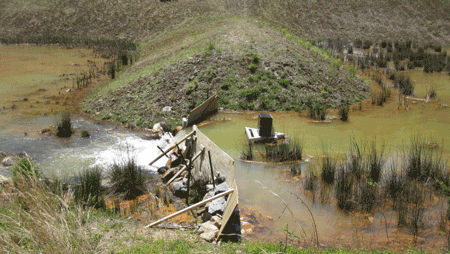
For weirs wing walls are typically nothing more than vertical structures perpendicular to the direction of flow that divert water to the weir notch. Wood works well here as the walls are not critical to flow measurement.
Images: Harvard Forest, PolarTREC, Ministry of Environment, Lands and Parks Resources Inventory Branch, British Columbia
Related Blog Posts
Explore more insights in our blog.

LOCATIONS IN ATLANTA, GA & BOISE, ID



